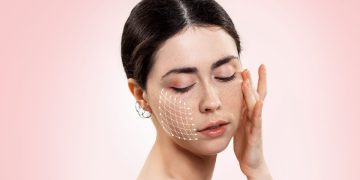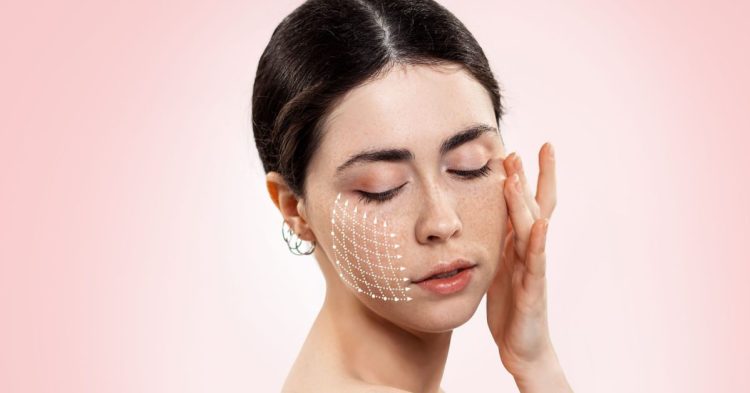Facial aging is a natural process that leads to sagging skin, loss of volume, and the formation of wrinkles. For individuals seeking rejuvenation, two popular procedures are often considered: thread lifts and traditional surgical facelifts. Both aim to restore a youthful appearance, but they differ significantly in terms of technique, invasiveness, recovery, longevity, and suitability. Understanding the pros and cons of each procedure is essential for making an informed decision. This comprehensive guide delves into the mechanisms, treatment areas, expected results, risks, and who should consider thread lifts versus traditional facelifts.
Mechanism and Technique
Thread Lifts
Thread lifts are minimally invasive procedures that use biodegradable threads inserted under the skin to lift and reposition sagging tissue. Common thread materials include polydioxanone (PDO), poly-L-lactic acid (PLLA), or silhouette threads.
- Technique:
- Local anesthesia is applied to the target area.
- Threads with small cones or barbs are inserted using fine needles or cannulas.
- Threads anchor the skin and underlying tissue, providing an immediate lifting effect.
- Over time, threads stimulate collagen production along their paths, enhancing skin firmness and elasticity.
- Key Feature: Thread lifts primarily rely on mechanical lifting combined with natural collagen stimulation, making them suitable for mild to moderate sagging.
Traditional Facelifts
Surgical facelifts, or rhytidectomies, are invasive procedures that provide comprehensive lifting and tightening of the facial and neck tissues.
- Technique:
- Performed under general anesthesia or sedation.
- Incisions are typically made along the hairline and around the ears.
- Underlying muscle and tissue layers (SMAS – superficial musculoaponeurotic system) are repositioned.
- Excess skin is removed, and the remaining skin is redraped for a smoother, more youthful appearance.
- Key Feature: Surgical facelifts address both skin laxity and underlying tissue sagging, allowing for more dramatic and long-lasting results.
Areas Treated
Thread Lifts:
- Cheeks and midface
- Jawline and jowls
- Eyebrows and forehead
- Neck (mild sagging)
Traditional Facelifts:
- Full face, including midface, jawline, and neck
- Deep lifting of jowls and nasolabial folds
- Often combined with eyelid surgery, brow lifts, or fat grafting for comprehensive rejuvenation
Thread lifts are ideal for localized, subtle lifting, whereas surgical facelifts are designed for extensive rejuvenation, particularly in cases of significant sagging or skin excess.
Longevity Comparison
Thread Lifts:
- Immediate lifting effect visible post-procedure
- Collagen-stimulating effects develop over 2–3 months
- Results typically last 12–24 months, depending on thread type, skin quality, and aging process
- Gradual loss of lift occurs as threads dissolve
Traditional Facelifts:
- Immediate and dramatic results due to tissue repositioning and skin excision
- Longevity ranges from 7–10 years, although natural aging continues
- May require touch-ups or complementary procedures over time
Thread lifts offer convenience and minimal downtime but shorter-lasting effects, while surgical facelifts provide long-term, transformative results.

Risks and Recovery
Thread Lifts:
- Common Side Effects: Mild swelling, bruising, temporary discomfort, or slight asymmetry
- Rare Risks: Thread migration, infection, minor skin dimpling
- Recovery: Typically 1–3 days of downtime; normal activities can often resume immediately
Traditional Facelifts:
- Common Side Effects: Swelling, bruising, numbness, tightness, and temporary discomfort
- Rare Risks: Hematoma, nerve injury, infection, scarring
- Recovery: 2–4 weeks before resuming social or work activities; full healing may take several months
Thread lifts are attractive to patients seeking minimal downtime and lower risk, while traditional facelifts require surgical recovery but offer more dramatic results.
Who Should Consider Each
Thread Lifts:
- Individuals in their late 30s to early 50s with mild to moderate sagging
- Patients seeking subtle, natural-looking improvements without surgery
- Those who prefer quick procedures and minimal downtime
- Candidates with realistic expectations about results and longevity
Traditional Facelifts:
- Patients with significant sagging, deep wrinkles, or excess skin
- Individuals looking for long-lasting, comprehensive facial rejuvenation
- Those who are medically fit for surgery and can commit to recovery time
- Patients willing to accept higher costs and surgical risks for dramatic results
In many cases, a combination approach may be used: thread lifts for localized, minor lifting in younger patients, and surgical facelifts for extensive rejuvenation in older patients.
Conclusion
Thread lifts and traditional facelifts both play important roles in facial rejuvenation, yet they serve distinct needs. Thread lifts are minimally invasive, ideal for subtle lifting, and require minimal downtime, but offer limited longevity. Surgical facelifts, on the other hand, provide dramatic, long-lasting results for individuals with significant facial aging, though they involve more risk and recovery time.
Choosing between these procedures depends on age, degree of sagging, aesthetic goals, medical history, and tolerance for downtime. Consultation with a qualified aesthetic or plastic surgeon is essential to determine the most appropriate treatment plan. By understanding the mechanisms, areas treated, longevity, risks, and ideal candidates, patients can make informed decisions that align with their expectations and desired outcomes.












































